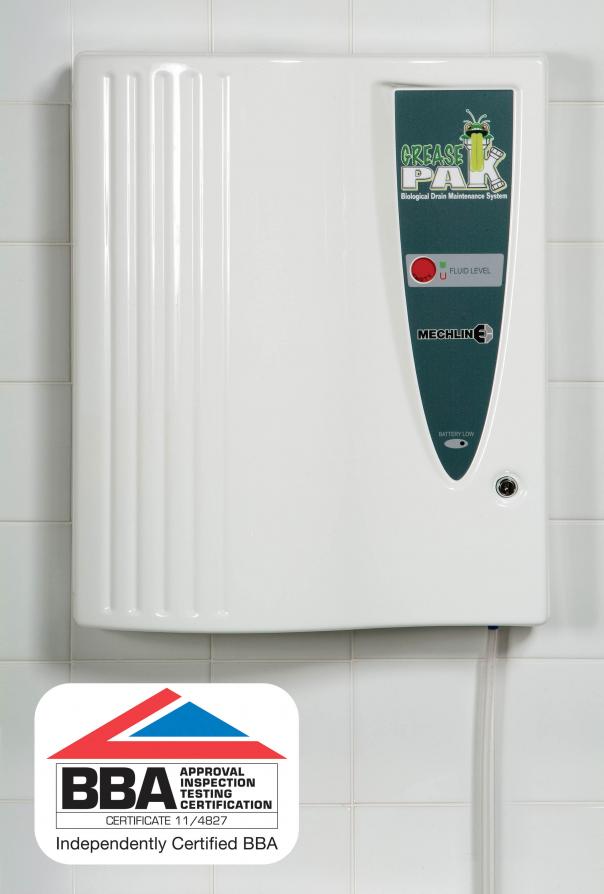
Over 70% of drain blockages are caused by build-up of FOGs (fats, oils and grease) and building regulations require commercial hot food premises be fitted with a grease separator or other effective means of grease removal.
It is advisable to fit a suitably-sized grease trap (preferably outside the kitchen area) or a mechanical grease removal system and/or a bioremediation system that permanently breaks down and removes FOGs from kitchen drains.
Suitably-sized grease traps can require large spaces and, in some instances, may present hygiene, safety, maintenance and cost concerns to operators.
Bioremediation systems offer an alternative. These use naturally-occurring bacteria that produce enzymes to "digest" (break down) FOGs into simpler compounds. These compounds are compatible with main drains and sewage treatment facilities and the FOGs cannot reform once they've been bioremediated, so drains and sewers can be kept free-running.
Bioremediation can be used as a stand-alone system or in conjunction with grease traps to increase the trap’s efficiency. The differing systems available are wall-mounted, pumped and pre-activated dosing.
The effectiveness of bioremediation depends on a number of factors: does the product contain the right bacteria that can produce enzymes to break down the hydrocarbon chains; are there enough bacteria in each millilitre to ensure a biomass can be maintained within the drainage system to deal with the site conditions; and finally, are there enough specific strains in the product to ensure microbial activity is maintained in a range of conditions, to deal with the wide variety of FOG compounds and other organics discharged in drains, such as starch?
Not all formulations are strong enough to combat the harsh environment of commercial kitchen drains and the nature of the products discharged into the drains.
There is evidence that single-strains are not as effective or as durable in the drain as multi-strain formulations.
There’s also a choice between live and dormant bio-cultures. Live cultures are effective but their shelf-life can be short. Powerful, multi-strain dormant cultures may prove more practical. When they encounter FOGs they are as effective as live cultures but have a longer shelf-life and can last longer in the drains.
Beware of using price as your barometer. Check with the manufacturer for the product’s track record and the certification of safety, legislative compliance and efficacy.
The engineering required to ensure the bio-chemistry is right for kitchen FOGs requires testing, research and quality assurance to provide consistency and can sometimes come at a cost.
Bioremediation systems are a proven solution to the FOG/drain problem and are hygienic, safe and cost effective options to traditional traps.
For more information contact Mechline: T: 01908 261511; W: www.mechline.com.